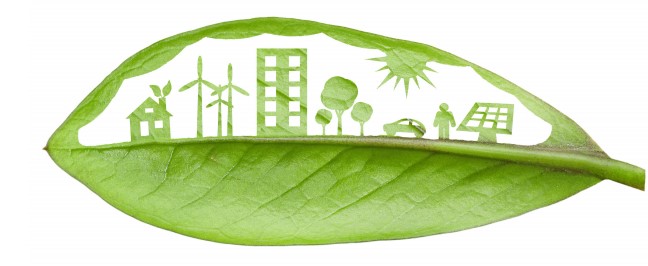Building Back Better: Social impact
| Line 41: | Line 41: | ||
* BRE articles on Designing Buildings Wiki. | * BRE articles on Designing Buildings Wiki. | ||
* BREEAM: The Next Generation. | * BREEAM: The Next Generation. | ||
| + | * Building Back Better: Circularity and BREEAM. | ||
* Building Back Better: Health. | * Building Back Better: Health. | ||
* Building Back Better: Net zero carbon and BREEAM. | * Building Back Better: Net zero carbon and BREEAM. | ||
Revision as of 17:33, 22 February 2021
Contents |
Introduction
In its work to provide resources for the construction sector, BREEAM has created the online briefing hub, ‘Building Back Better with BREEAM: Supporting the green recovery’. The hub gathers a collection of briefing papers that reflect BREEAM’s position on important issues.
Social impact
The BREEAM vision for a fair and appropriate built environment is one that demonstrates social sensitivity in a manner that intentionally benefits the long-term economic growth, wellbeing, resilience and inclusion of people within their communities. To reflect this vision, BREEAM has published a briefing paper, 'Encouraging positive social impact and equity using BREEAM'.
The paper outlines a vision for a socially equitable built environment based on the following practices:
- Encouraging social impacts and equity as key considerations at each life cycle stage.
- Driving the delivery of positive social impacts and value as an output from the development and operation of built assets.
- Contributing to and encouraging innovation in the assessment and measurement of built environment related social impacts.
- Rewarding built assets that generate positive social impact and value.
- Incentivising the development and operation of socially equitable places.
Seven aspects of social value
The BREEAM standard can be applied to seven different aspects:
- Health and wellbeing of asset users and local communities. A built environment that ensures physical, social, intellectual and emotional wellness.
- Behaviour change and awareness raising. Solutions that encourage people to make the most sustainable choice.
- Accessibility and inclusivity. Design and operations that make environments usable by all people, to the greatest extent possible without the need for adaptation or specialised design
- Resilience, safety and security. Promoting practices that mitigate risks, successfully endure shocks and identify opportunities to adapt and thrive in our changing world.
- Asset user and community involvement and engagement. Activities that promote active participation and involvement of built environment asset users and stakeholders in decision making processes
- Local investment. Supporting investment in local businesses and supply chains, providing training to and upskilling of the local community and offering long-term employment opportunities to local people.
- Social justice and responsible leadership. Ensuring the needs of communities are fairly met with equity, diversity and inclusion at the heart of the project, and that human exploitation is eradicated.
Looking ahead
BREEAM intends to continue its work in this area by collaborating with global stakeholders to create a universal understanding of social impact - regardless of geographic and cultural differences. This will include language and guidance for successful delivery, adoption and results.
Find out more at: https://files.bregroup.com/breeam/briefingpapers/BREEAM-Social-Impact-Paper_final.pdf
Related articles on Designing Buildings Wiki
- BRE articles on Designing Buildings Wiki.
- BREEAM: The Next Generation.
- Building Back Better: Circularity and BREEAM.
- Building Back Better: Health.
- Building Back Better: Net zero carbon and BREEAM.
- Building Back Better: Resilience.
- Building back better with BREEAM.
- Built environment.
- Changing lifestyles in the built environment.
- Collaborative practices for building design and construction.
- Health in the built environment.
- Inclusive design.
- Social Sustainability at Master-planning Stage.
- Sustainability in building design and construction.
External resources
- BREEAM, Encouraging positive social impact and equity using BREEAM.
- BREEAM, Encouraging resilient assets using BREEAM.
- BRE Group, Building Back Better.
- BRE Group, Net Zero Carbon and BREEAM.
Featured articles and news
Infrastructure that connect the physical and digital domains.
Harnessing robotics and AI in challenging environments
The key to nuclear decommissioning and fusion engineering.
BSRIA announces Lisa Ashworth as new CEO
Tasked with furthering BSRIA’s impressive growth ambitions.
Public buildings get half a million energy efficiency boost
£557 million to switch to cleaner heating and save on energy.
CIOB launches pre-election manifesto
Outlining potential future policies for the next government.
Grenfell Tower Inquiry announcement
Phase 2 hearings come to a close and the final report due in September.
Progress from Parts L, F and O: A whitepaper, one year on.
A replicated study to understand the opinion of practitioners.
ECA announces new president 2024
Electrical engineer and business leader Stuart Smith.
A distinct type of countryside that should be celebrated.
Should Part O be extended to existing buildings?
EAC brands heatwave adaptation a missed opportunity.
Definition of Statutory in workplace and facilities management
Established by IWFM, BESA, CIBSE and BSRIA.
Tackling the transition from traditional heating systems
59% lack the necessary information and confidence to switch.
The general election and the construction industry
As PM, Rishi Sunak announces July 4 date for an election.
Eco apprenticeships continue help grow green workforce
A year after being recognised at the King's coronation.
Permitted development rights for agricultural buildings
The changes coming into effect as of May 21, 2024.





















